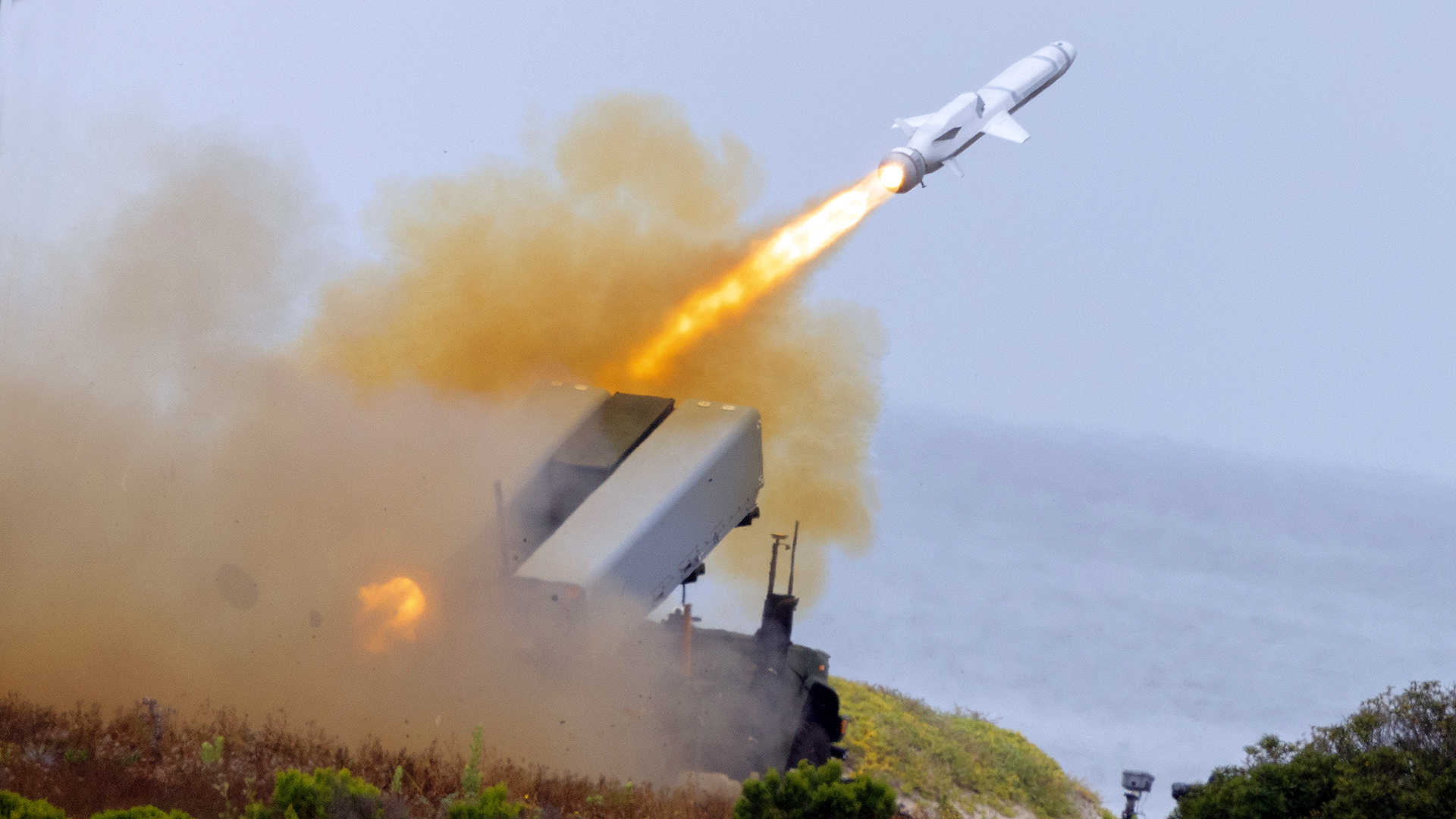The U.S. Marine Corps is deploying its Navy-Marine Expeditionary Ship Interdiction System (NMESIS) armed with Naval Strike Missiles into the heart of one of the world’s most strategic and tense bodies of water — the Luzon Strait. It will be the closest to the Chinese mainland that U.S. land-based cruise missiles have been deployed.
The Luzon Strait sits between Taiwan and the Philippines and is roughly 220 miles across at its narrowest point. It is a critical shipping artery and also an incredibly important military conduit, especially for China’s rapidly growing fleet. It’s from here that assets based in the South China Sea can access the Philippine Sea and the greater Pacific, and vice versa. This includes China’s growing fleet of nuclear-powered submarines, some of which provide the country’s second-strike nuclear deterrent. It’s also a key path for the U.S. Navy to access the South China Sea. The stretch of water is also a primary area where a major battle over Taiwan would be fought. As a result, the choke point formed by the strait is very heavily monitored for activity above and below the waves. In a conflict, it will instantly become an anti-ship super missile engagement zone (SMEZ).

The deployment of the USMC’s new land-based anti-ship missile systems, as well as other assets, including organic ground-based air defenses, will come as part of Exercise Balikatan ’25 — the 40th iteration of the annual drills. The 3rd Marine Littoral Regiment (MLR), designed to fight within an enemy’s own watery backyard, will be a key U.S. player in the exercise, which will include some 14,000 personnel, predominantly from the U.S. and Philippine armed forces. Smaller contingents from Australia and Japan will also be taking part, which is a first for the latter country.
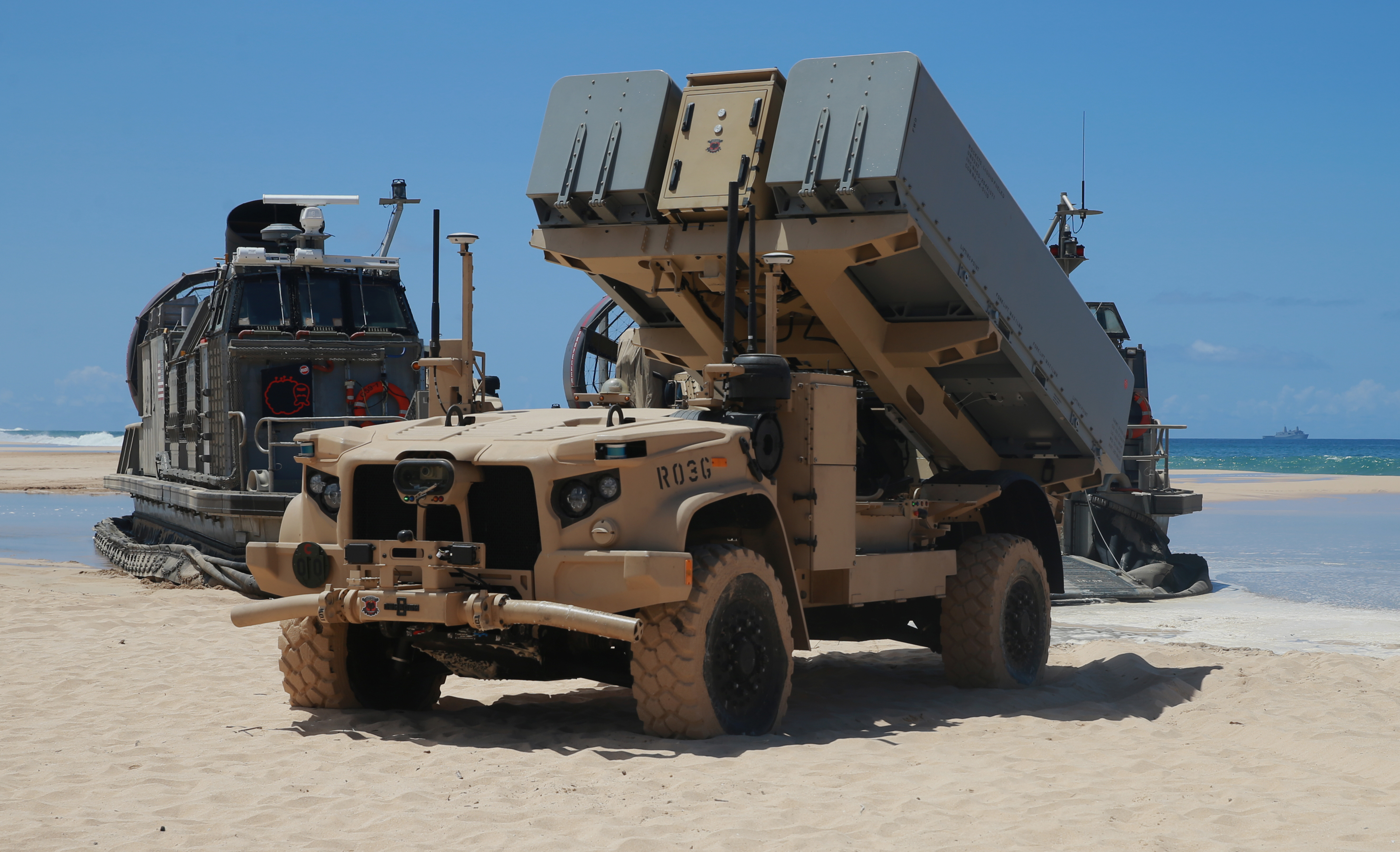
For Balikatan ’25, 3rd MLR’s unique capabilities, including its NSMs, will be heading to Northern Luzon and the Batanes Islands in the Philippines, the latter of which sits nearly smack-dab in the middle of the Luzon Strait. There they will be participating in drills that will include live-fire and a sinking exercise (SINKEX), although NSM launches will be simulated.
A USMC release provides additional details as to its capabilities that are going to be integrated into the exercise:
“The NMESIS will be employed during the Maritime Key Terrain Security Operations in Northern Luzon and the Batanes Islands. During this event, U.S. Marines with 3d Littoral Combat Team’s Medium-Range Missile Battery and Philippine Marines with 4th Marine Brigade will use air lift from the U.S. Army’s 25th Combat Aviation Brigade and the U.S. Air Force’s 29th Tactical Airlift Squadron to transport several NMESIS launchers from Northern Luzon to multiple islands in the Batanes island chain. Once on the islands, U.S. and Philippine Marines will work together to establish a Fires Expeditionary Advanced Base.
In Northern Luzon, the AN/TPS-80 Ground/Air Task-Oriented Radar, operated by 3d Littoral Anti-Air Battalion’s Tactical Air Control Element – will surveil the surrounding airspace in 3d MLR’s area of operations in support of maritime strike and airspace deconfliction. Through various communication means and methods, the sensing data collected by the G/ATOR will be sent to the Fires and Air Direction Element via tactical data links in support of the commander’s information exchange requirements. That sensing data will then transfer to the Battery Operations Center, where it will be processed into tracks and targeting data before making its way back to the Fires EAB.”
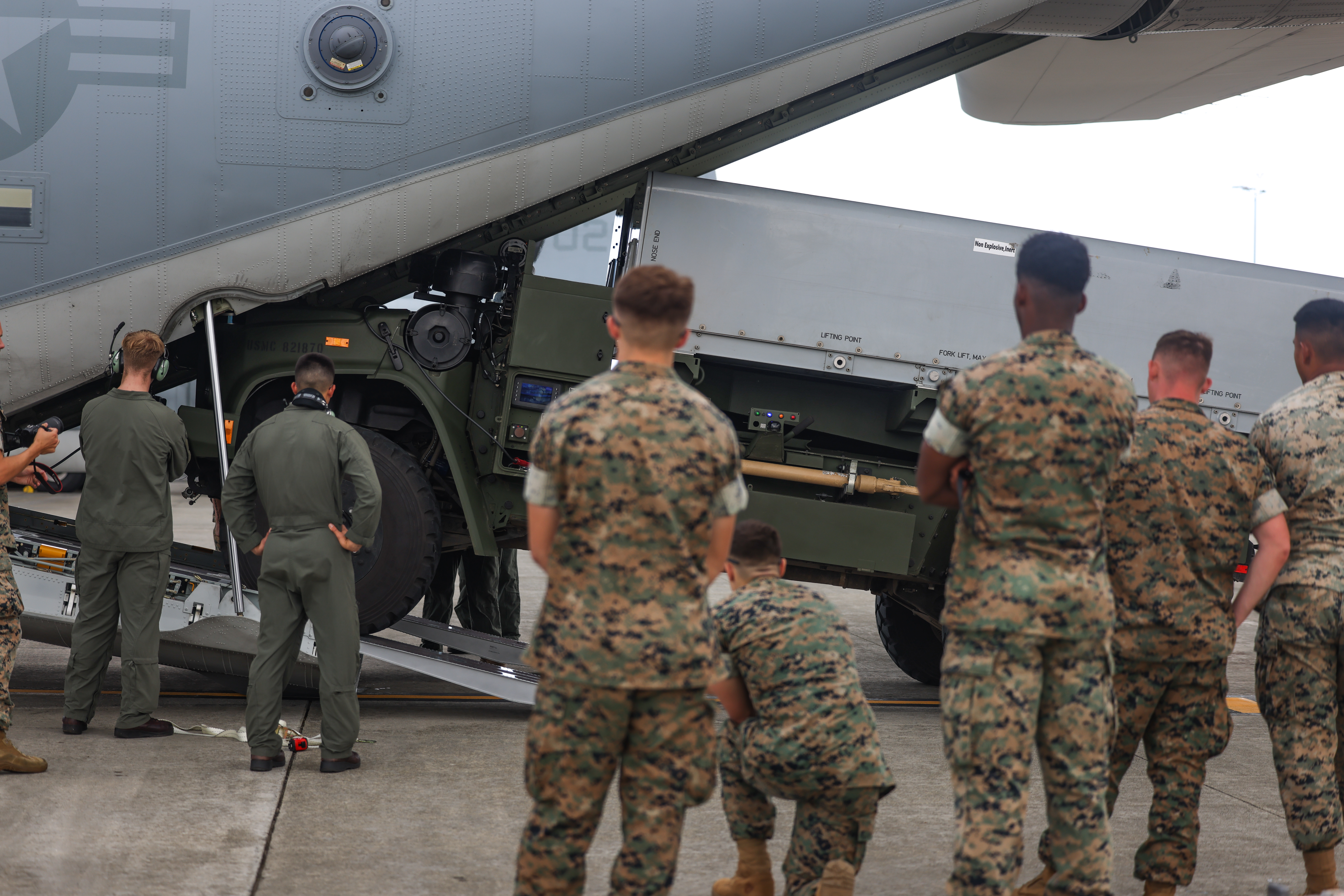
The U.S. military has stationed missiles in the Philippines recently in the form of U.S. Army Typhon launchers capable of firing Tomahawk cruise missiles, as well as SM-6s that can rapidly strike targets as a quasi-ballistic missile. While Tomahawks and SM-6s possess longer range, they are not based as far forward as NMESIS and its NSMs will be. Neither of those missiles are as focused on anti-ship and sea control operations as the NSM, either.
NMESIS uses an unmanned variant of the Joint Light Tactical Vehicle (JLTV), also known as the Remotely Operated Ground Unit Expeditionary-Fires (ROGUE-Fires), and a launcher with two ready-to-fire NSMs inside their self-contained canisters. The system is meant to be rapidly deployable and capable of highly dispersed operations in austere areas. As an uncrewed vehicle-launcher combo, small teams of Marines monitor multiple launchers dispersed around an area and move them regularly to keep them from being targeted by the enemy.
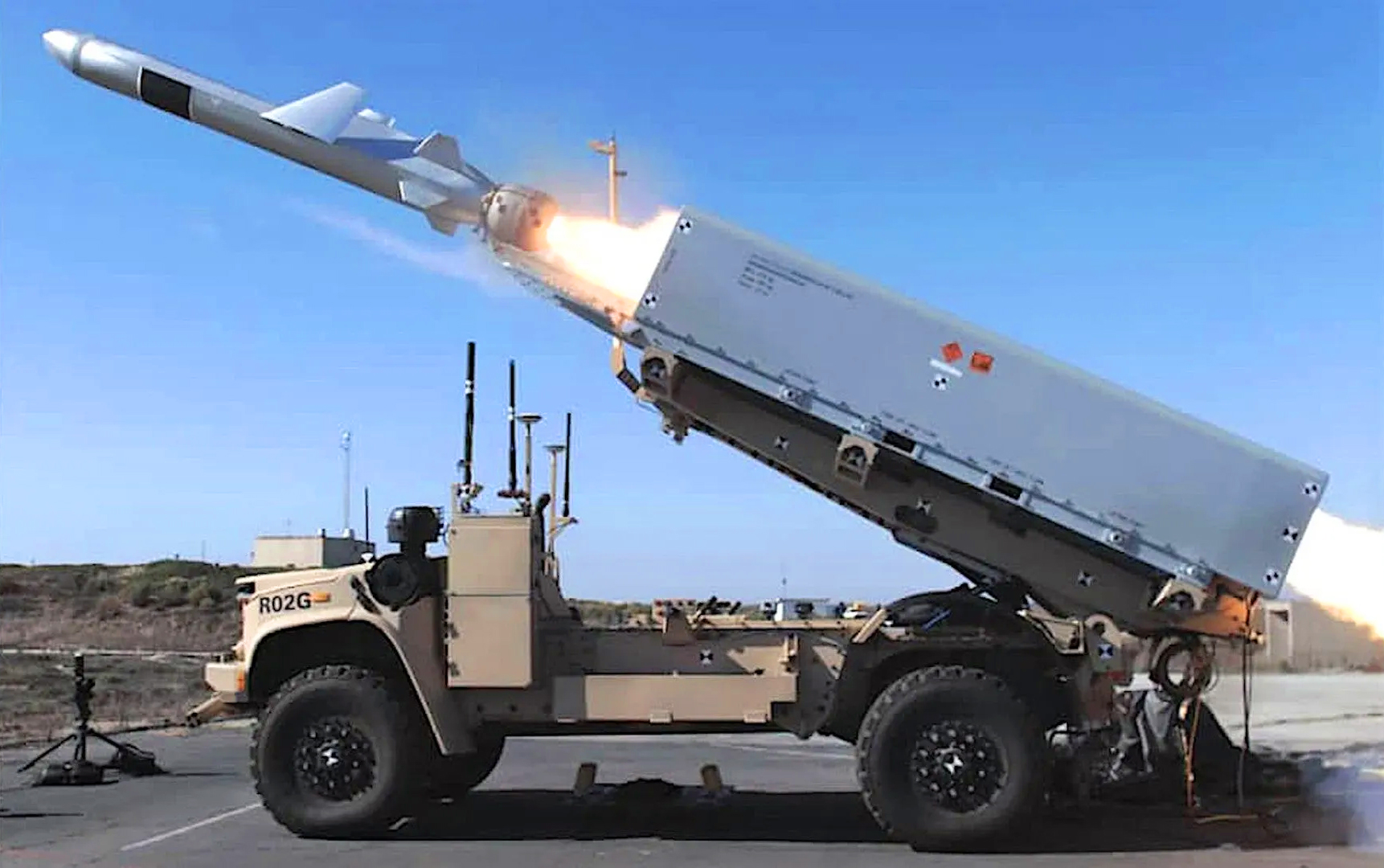
The NSM itself is a Norwegian design from Kongsberg Defence that is now produced for the U.S. in concert with Raytheon. The missile has stealthy features to help aid in its survivability. It also uses an imaging infrared seeker for terminal-phase targeting. Emitting no radar radio frequency (RF) energy of its own, the missile screams toward its target without alerting the enemy to its presence using passive RF detection measures. The type is now equipping some U.S. Navy Littoral Combat Ships and destroyers, with the Constellation class frigates also slated to have NSMs as part of their armament package. The missiles cost about $1.9M each.

With the baseline NSM’s range of around 110 nautical miles, there is perhaps no better place for NMESIS to be. From its island position in the heart of the strait, it would be able to put any vessel transiting the waterway from the tip of Taiwan, nearly to the northern reaches of Luzon in the Philippines, and 100 miles east to west, at risk. To put it bluntly, this is what the system, and the new Marine Littoral Regiments for that matter, were designed to do. On the other hand, executing such an anti-access strategy in the Luzon Strait represents what would be among the highest risk operations an MLR could conceivably carry out.

This deployment will definitely rattle Beijing, which has already expressed great ire at the deployment of the Army’s Typhon system to the Philippines. This also comes as China’s People’s Liberation Army (PLA) is ratcheting up the pressure on Taiwan by encircling the island with multi-domain military might on a regular basis now, and massive treasure is being dumped into expanding the country’s Navy as fast as possible. Considering how critical this waterway is to China, it’s only logical that the PLA is doing everything it can to come up with a plan to neutralize such a deployment as fast as possible should hostilities break out. But targeting small truck-sized launchers using standoff weapons, even those on an island, wouldn’t be easy. This raises the cost of assuredly destroying this capability for PLA and thus making the concept more effective. This all fits in with the Marines’ Expeditionary Advanced Base Operations (EABO) strategy that is rapidly evolving.
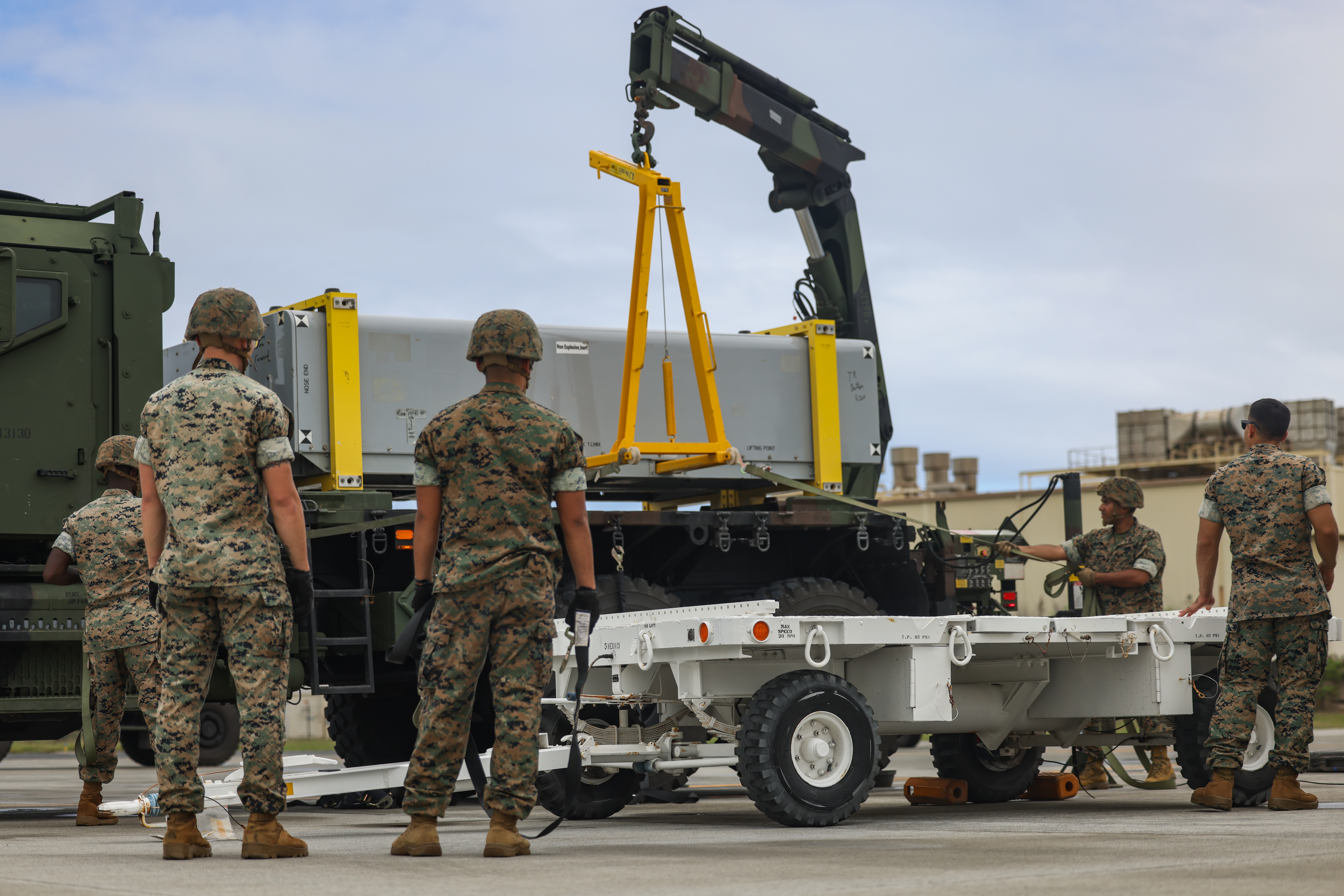
Marine Lt. Gen. James Glynn, the U.S. exercise director for this year’s Balikatan, has described it as a “full battle test.”
“The full battle tests is intended to take into consideration all of the regional security challenges that we face today, beginning in the South China Sea,” he stated.
“The Balikatan exercise may probably help deter the conflict in Taiwan. But for our concern, it is only for deterrence of any possible coercion or invasion to our country,” Maj. Gen. Francisco Lorenzo of the Philippines, who is overseeing his country’s portion of the drills, said.
While the scope of the drills is impressive, the U.S. deploying land-based missiles capable of shutting down the Luzon Strait is certainly a new construct in the growing tensions between Beijing and Washington, D.C.
Balikatan ’25 began today and it will run through May 9.

Contact the author: Tyler@twz.com
